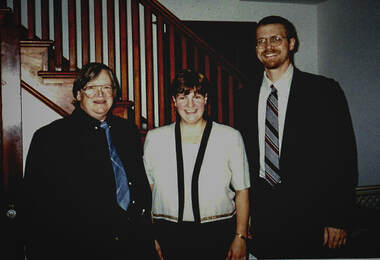 John Crouch, Kris, and Carl in 2002 John Crouch, Kris, and Carl in 2002 1971 – Bill Radomsky starts looking for a place to plant a vineyard 1973 – Bill plants Lower Chard/Upper Chard/Cabernet/Rootstock/Experimental blocks and places trailers 1974 – Bill plants Seyval in Block Four and Block Five 1978 – brothers John and Tim Crouch purchase vineyard 1980 – first commercial vintage 1981 – tasting room opens 10/31 1982 – Cabernet and Chardonnay replants 1984 – first Cadenza (flagship wine) 1987 – re-plant part of Block Five with Riesling/Pinot Noir/Pinot Meunier/Nebbiolo 1992 – re-plant more Chard and Cab 1995 – start Chef Series (dinner series) 1999 – Traminette planting in Block Five 2000 – Tim Crouch passes 2001 – Carl Helrich and Kris Miller come to Allegro/Naylor manages vineyard 2002 – Carl and Kris purchase Allegro/Chef Series re-boot/re-plant some Cab 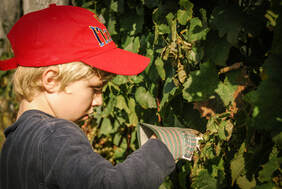 2009 2009 2003 – John Crouch passes 2004 – re-plant Chard 2005 – plant Merlot in Block Five 2006 – open shop at Tollgate Village in York 2008 – put in crush pad/started selling to PLCB 2009 – build warehouse 2012 – plant Cab Franc in Block Five 2014 - Nelson Stewart hired as vineyard manager 2015 – plant Block One (Chard)/Four (Merlot)/Six (Petit Verdot/Cab Franc)/build barrel room and warehouse and office/open Strasburg shop/start Allegro Wine Club 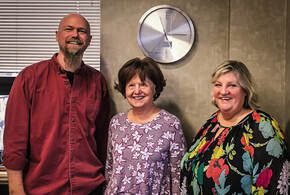 2020: Purchasing Naylor Property 2020: Purchasing Naylor Property 2016 – plant Block Seven (Sauvignon Blanc/Viognier/Semillon/Albarino) and Nouveau vineyard (Arandell)/start selling in grocery stores 2017 – pull out Block Five/first Cadenza harvest/start selling to Rutters 2018 – start Cadenza wine club 2019 – open Stewartstown shop/open AirBnB apartment 2020 – purchase former Naylor Wine Cellars property in Stewartstown/first home deliveries/vineyard re-plants 2021 - Nelson Stewart retires; Allegro purchases Pinnacle Ridge wine brand; celebration of Allegro's 40 years!
0 Comments
Today marks the 40th anniversary of Allegro opening its winery doors for the first time! In honor of the auspicious occasion, Carl and I have selected our Top 40 Reasons to Wine. (The good news is, that both good and bad days give us reasons to wine…) Chosen from Allegro’s four decades, here are some highlights, in no particular order: Top 40 Reasons to Wine 1) Young Allegro co-founder John Crouch receiving a wine kit for Christmas, the gift which started it all. 2) Allegro wrangling with Napa’s big boys (Robert Mondavi and Baron Philippe de Rothschild) in 1983 over the “Opus One” name, the settlement of which bought Allegro exactly one corking machine and one gravel bridge for the driveway. 3) The night at the Chef Series dinner in the early 2000s when, right as guests were arriving to taste wine, heavy rain split the winery awning which was supposed to shelter four tables of revelers. 4) John and Tim Crouch installing a tiny cube heater in the unheated tasting room—not for their comfort or the comfort of their customers, mind you, but so that they could warm the glasses of red wine in their hands. 5) The collaboration with Mike and Rose Fiore in Maryland, to form the original Mason-Dixon Wine Trail. 6) The near-mythical 1980’s-era strawberry wine (a tiny batch yielding 270 bottles) which gummed up the press and was made exactly one time, but was requested by customers over and over and over through the years. 7) Gifted winemaker Tom Burns (now at Boordy), gaining his winery legs at early Allegro. 8) Those horrible eyesore cast-off military trailers in which John, Tim, and Marguerite Crouch lived until the day their new house up the hill was finished and they just walked out—those trailers were memorably the first things customers would see when they warily approached the winery. 9) Carl hearing Tim Crouch speak (not too long before his passing, in 2000) at a vineyard conference, hearing him say he wished Allegro had been planted totally in Cabernet Sauvignon. 10) Carl and Kris walking through the winery with John for the first time in May of 2001, and then out into the vineyard, Carl wearing tiny son Carl in a backpack carrier. 11) Pandemic spring (2020), when Allegro produced hand sanitizer (from purchased spirits) for friends, family, and staff. 12) John’s beloved Westie Dudley passing away within hours of his owner, in March of 2003. 13) The summer of 2020, when a pair of great horned owls made nightly prowls across the vineyards. 14) Carl’s two decades of collaborations with winegrower Nelson Stewart, who retired from Allegro this past March. 15) John Crouch coming to Allegro @ the ripe age of 31; Carl doing the same. 16) The year the Helrich guys discovered Power Sledding, pulled on sleds behind the Allegro pick-up truck as it plowed through piles of snow. Ah, wintertime in The Brogue… 17) The spring of 2011, when mama cat abandoned a tiny kitten at our doorstep, she who would become fierce Artemis, huntress of the estate, the reason we have “Beware of Cat” and “No, Seriously” signs at the winery in Brogue. 18) John’s brilliant move of leaving Tim to talk with annoying tasting room customers, with the line: “I’ve got a pump running in the back.” 19) Carl and Kris’s son Dylan being born on his actual due-date (which never happens), which just so happened to be about an hour before a Chef Series dinner at the winery. Cheers to Carl’s brother Dave for hosting in their stead, and to Carl for not taking the bait when Kris, holding the brand-new vintage kid, told him, “You could still go…” 20) Son Carl completing his high school science fair project by measuring the relative sweetness (ripening) of grapes at the tops and bottoms of clusters. 21) Carl and Kris inheriting John and Tim’s wonderful friendships with Allegro’s volunteers—including Gotwalts, Deyarmins, Alexanders, Kohlers, Pam!—, chefs—Richard, Kevin, Ed, Wade!—, friends, and customers. 22) September, 2020, when a photo of Carl and Kris in the vineyard appeared for a moment on a Times Square billboard as part of Farm Aid’s virtual celebration of farm families. 23) Kris handing infant Dylan to Carl in March of 2003, because well-known Wine Spectator author James (“call me Jim”) Laube was calling from California and wanted to talk with her about the legacy of John Crouch and Allegro. 24) The day (Black Friday, 2006) Allegro hired Brenda! The day Allegro hired Ray! and Steve! and Emery! and Dwayne! and Darcy! And and and… (We’ve really had, and have, an incredible group of employees.) 25) The friendship and good advice of Mark Chien (former PSU viticulture extension agent) through many vintages. 26) Finalizing the purchase of the property of Naylor Wine Cellars with Janie Potter in February of 2020, mere days before the pandemic shook all parts of the industry and our world. 27) Friends Lesley Long Ward and Bill Ward, who got married during a rainstorm in September of 2003 and who have returned every year since for their anniversary picnic! 28) That time in the fall of 2002 when birds ate nearly every grape of Allegro Chardonnay in the vineyards…over the course of just. one. day. 29) The establishment of the Allegro Wine Club in 2014 and the Cadenza Wine Club in 2019. We’re so appreciative of our 750+ members! 30) The time at the Split Rock wine festival when Allegro helped push the Chaddsford truck out of six inches of mud. 31) John frequently tasting wine during bottling, under the guise of “checking for SO2 levels.” 32) The years (2005-2008) when our then-holiday stand in York’s Galleria Mall almost sustained stampedes when we temporarily ran out of sweet red wine Harmony. (It may happen again this year with Apple Caramel…) 33) Turning Allegro’s Brogue winery deck into an impromptu dance floor, spurred by The Bayou Bandits during Prudhomme’s Lost Cajun Kitchen seafood boil feasts. 34) Kris’s dad Doug Miller endlessly mowing and mowing and mowing the Brogue property over the years. (Now it's Dylan's turn...) 35) Our walls of wine competition awards and merits, proudly displayed in the Brogue winery…um, bathroom. 36) The planting of what vineyard consultant Lucie Morton called our “Heritage Vineyard,” vinifera red grapes destined for our Cadenza estate-grown wines, in Brogue in 2015.
37) That time John told noted wine critic Robert Parker (humorously, though not received thus), when asked what pressure he'd applied to the red vinifera grapes on the crush pad, that "I pressed the living shit out of them, Bob." 38) Carl’s winemaking collaborations with fellow PA winery owners Brad Knapp (Pinnacle Ridge) and Joanne Levengood (Manatawny Creek) through the years, with many enlightening barrel tastings and three “Trio” co-blends. 39) Cadenza years: The best winegrowing vintages, made into Allegro’s flagship wines. Roll call: 1984, 1986, 1988, 1991, 1992, 1994, 1995, 1997, 1998, 2005, 2007, 2008, 2010, 2013, 2017! And, in 2016, Cadenza grew into its own label of Allegro’s best Brogue vineyards estate-grown wines. 40) Yeah, we love it, too—our box truck, and its cheeky viral message, penned by Emery. All together now: “IN CASE OF ACCIDENT: Bring Cheese and Crackers. Lots and Lots of Cheese and Crackers.” Carl and I have felt so fortunate to have been Allegro’s stewards for just over half of its 40 years, and deeply appreciate all who have been a part of our shared history. Cheers to many vintages more! -Kris Miller 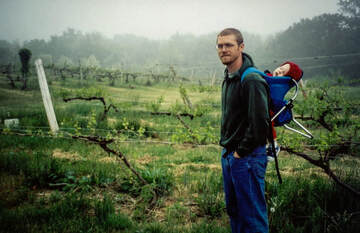 Twenty years ago in May, Carl and I made our first visit to Allegro Winery in The Brogue, with our young son along for the ride. At the time we were living up near State College and working at Mount Nittany Vineyard & Winery. Allegro's owner/winemaker John Crouch had decided to sell Allegro after his brother Tim (co-owner and winegrower) passed away. I remember the visit day as quite cold and misty. Together we toured the buildings and walked the vineyard, which was rather run-down but beginning to shine with the bright green of a new growing season. That day two decades ago turned out to be quite an auspicious one. While we couldn't have read the future in those new Cabernet leaves, they have proved to be the foundation of the story of a successful family vineyard and winery which, under Carl's leadership, has grown to include multiple properties and wine brands and has now even survived a pandemic. The lessons from these years here together are many, and they certainly include the importance of stewardship, flexibility, and gratitude.  The dedication to quality wines begins in the vineyards. As stewards of what's now called our Cadenza Vineyards--the property on which Allegro's original winery is situated in The Brogue--we've tended the vines with care. Some of the venerable original Cabernet Sauvignon and Chardonnay vines which were originally planted on the property in 1973 and 1974 (when Carl and I were toddlers) are still thriving here. Less fruitful older vines have been replaced with new plantings through the years, and the estate vineyard from which Cadenza wines are produced has grown to include over ten acres planted with ten different varieties, including Merlot, Petit Verdot, and Sauvignon Blanc. This growing season, Carl is in the vineyards daily, and the vines are thriving under his management. I'm in the vineyards myself more lately, taking part in tending the vines through the early summer tasks of suckering, tucking, and weed management. Being out on the property really does allow us a sense of perspective, from seeing the tiniest evidence of the dreaded Spotted Lanternflies to listening to the short-lived chorus of the amazing Brood X Cicadas to seeing the effects of long-term phenomena such as climate change. I love to watch the procession of eagles, deer, snakes, foxes, and dozens of other birds and creatures which are also passing through this green corner of the world. While stewards of Allegro, Carl and I have also have the pleasure of watching our two boys grow and thrive here. The support and many volunteer hours of family and friends has helped sustain us, particularly during our early years here, and we appreciate the wonderful community of employees (currently numbering over 30) which has become part of Allegro's story. 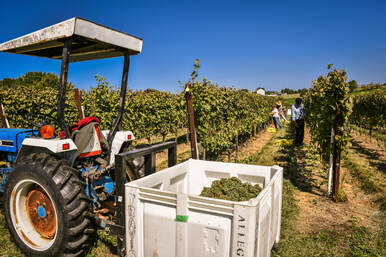 2020 Harvest in Stewartstown Vineyards 2020 Harvest in Stewartstown Vineyards Carl and I moved to York County and began managing Allegro in August of 2001, and we purchased the property and business early the next year. Having fully committed to Allegro seemed particularly scary through the events and aftermath of September 11th, 2001. We learned early and often how important a tool flexibility is when one is trying to keep a business afloat, even when the seas get rough. Growing Allegro has meant dedication to flexibility of working hours, financial plans, family/work ratios, retail expectations, spray schedules, business planning...and Carl has proven to be a master of the positive pivot. In an odd mirroring of September, 2001, in March of 2020 we had just finalized the significant purchase of the former Naylor Wine Cellars property in Stewartstown, PA, when the COVID-19 pandemic shut down normal life as we knew it. From one hour to the next on some days, we were unsure how "essential" our business would be deemed or how we would or wouldn't be allowed to continue wine sales. Fortuitously, by this point in his nearly two decades of sustaining our business, Carl had diversified the ways we grow, produce, and sell wine to such an extent that he still found open doors when others were shutting. Wholesale wine sales and wine shipments grew. The 2020 vintage was harvested. Allegro's employees were kept safe. We've weathered this incredible storm. And that brings me to the lessons Allegro has taught us about the importance of gratitude. If we hadn't stopped many times along this journey to appreciate this land, this industry, this growth, we would be poor people. Instead, growing Allegro for two decades has given us daily opportunities to raise our glasses to the beauty of this kind of life, uncertain though it may sometimes be. And, of course, it's literally filled those glasses with wine.
A few weeks ago our older son turned 21. Having lived nearly his entire life here at the winery (and having been present--though sleepy--at that first tour here in 2001), he had never yet gotten the chance to legally taste wine. While the dry varietals that Carl and I love proved quite shocking to his young palate, he did appreciate the fact that this living product represents the fruit of a heck of a lot of labor throughout these years. As his taste for wine develops, he and his brother will be able to taste the wines Carl made here when they were toddlers, when they were in high school, and even in 2020, when the world seemed to change overnight. It's a tangible, delicious legacy. Cheers to Allegro, to Carl's dedication, and to our 20 years here together!  Carl and Nelson Stewart met on August 14, 2001, at a winegrower meeting at Seven Valleys Vineyard in Glen Rock, PA. (Carl remembers the specific date because it was our wedding anniversary (!).) They struck up an acquaintanceship which became a friendship, and--eventually--the partnership which would come to shape 14 of our 20 vintages (so far) at Allegro. Nelson's retirement on March 19th from his position as Allegro's vineyard manager marks the end of an era for us all. Nelson's passion for grapegrowing has led him to collaborations with many regional wineries over the years, beginning with Elk Run in Maryland in 1988. He established his own vineyard near Stewartstown, PA, during the 1990s, and worked with other establishments including Karamoor Estate Winery in Fort Washington, PA. Nelson's dedication to quality vinifera grapes made him a good fit with Carl; both hold high standards and appreciate European wine styles and winegrowing traditions. For several vintages Carl bought fruit grown from Nelson's vineyards, and in March of 2014 Nelson came to Allegro to become our first full-time vineyard manager. Nelson's passion for music also made him a good fit for this place. He's an accomplished violinist who has played in symphony orchestras both in Baltimore and in Europe. No one who was at John Crouch's memorial in March of 2003 can forget Nelson's violin performance on that day. Allegro founders John and Tim Crouch were musicians themselves, as are many members of my own family--part of the reason why "Allegro" holds much meaning for all of us. How many other vineyard managers would fill his tractor cab with the sounds of a beloved Mahler symphony or opus by Heinrich Schütz? Nelson and my dad Doug Miller (retired PSU choral professor) shared many conversations about music, while standing out among the vines. Nelson's cheffing skills are also legendary. He's the one that taught our younger son how to properly prepare a pork loin on the grill, and for several years he provided the meals to sustain our exhausted "away crews" at wine festivals around the state. But of course, it's Nelson's winegrowing skills which we'll remember most--and, of course, the way he rocks a beret. Carl notes that Nelson is "one of the best grapegrowers the East Coast has had, and one of the few who pushed for quality grapes, even early on."
On Friday, March 19th, we gathered for a socially-distanced send-off for Nelson, upon his retirement from Allegro after these 7 vintages. We thank him for all the opportunities he made possible for us and for his dedication to our vines and wines. Cheers to you, Nelson! Cheers to you. Written by James Laube, for Wine Spectator John Crouch, the quiet but lovable musician-turned-vintner who founded Allegro Vineyards in Brogue, Pa., died on March 2.
Crouch held a special place in the hearts of wine lovers in this tiny hamlet 50 miles north of Baltimore. Friends will gather on Sunday in York to pay tribute to the late vintner. Crouch, an oboist, started the winery in 1980 with his elder brother, Tim, a violinist. They began their winemaking careers using a wine kit that John had received as a Christmas gift. They then took an old overgrown vineyard and nursed it back to health. In 1980, they built a winery, which opened on Halloween in 1981. Wine lovers in and around Brogue came to appreciate the brothers' fascination with classic French varieties, such as Cabernet and Chardonnay, along with their offbeat fruit specialty wines. I'd never heard of the Crouches or their wines until we were brought together by a quirk of fate. Twenty years ago, I wrote a story about the naming of the first wine from the joint venture of Robert Mondavi and Baron Philippe de Rothschild. Mondavi and Rothschild agreed to give Wine Spectator the exclusive on the naming of their "Napamedoc" -- a wine which no one outside the winery had tasted -- which they proudly called Opus One. After reading the article, Crouch wrote me a letter, followed by a phone call, politely informing me that -- surprise -- residents of Brogue had been drinking Opus 1, a wine he and his brother made, for close to a year. It cost $5.95 a bottle and could be purchased by the case at the local grocery store. You can imagine their shock and glee at the irony. The high-profile, aristocratic Mondavi-Rothschild venture had chosen the same name for its prestigious $50 Napa Valley Cabernet Sauvignon as Allegro's hybrid blend of peach juice and Seyval Blanc. It turned out that both Allegro and Mondavi-Rothschild had applied for the same name at about the same time. But the Crouches didn't bother with a patent and did not secure a registered trademark. Reluctantly they gave up the name. In the years since, I've often wondered what happened to the Crouches and Allegro. On March 4, I learned of John Crouch's death, due to heart and kidney failure, at the age of 55. Two years ago, when his brother Tim died, John became something of a recluse and decided to sell the winery. Along came Kris Miller and Carl Helrich, an energetic couple from upstate Pennsylvania smitten with a love of wine. Miller, 32, had been a graduate teaching assistant at Penn State, working in humanities and literature. But she found herself increasingly more interested in vineyard work than in academia. Helrich, 33, showed even more excitement about winemaking. "When I saw Carl catch his passion, I realized I hadn't caught mine," says Miller. But she's getting closer. This husband-and-wife team had been working at Mount Nittany upstate and were eager to own a winery. They met Crouch and, according to Miller, hit it off from the day they met. "Carl had this terrible cold, and we came into this humble building, and John pulled out the 1997 Cadenza," Miller recalls. "It was absolutely stunning, an amazing discovery for us." Cadenza was Crouch's homage to Bordeaux. While locals admired Allegro's French varietal wines, Miller says, they also respected Crouch for his palate, his appreciation of fine wine and for bringing winegrowing to their community. For the 2001 vintage, Crouch, Miller and Helrich teamed up for harvest and winemaking and then worked out a deal to transfer ownership of the winery. "What excites everyone is the continuity of Carl and John's winemaking," says Miller. "We're very happy that this overlap happened, that he and Carl were excited about the same wines." "I never dreamed I could work with grapes like this on the East Coast," admits Helrich. But the climate and soil provide a good interplay for the grapes that are grown on the rolling hill vineyard. "What influences the vineyard the most is it's a low-vigor site." In 2002, Miller and Helrich faced a drought, followed by a bird invasion that wiped out much of their grape crop, leaving them with one barrel of Chardonnay. And the vineyard posts, now 20 years old, need fixing, too. But the dessert wines turned out well, including a new wine called Aria, made in an ice-wine style from the Traminette grape, a descendant of Gewürztraminer. The couple is more determined than ever to make Allegro a success. "We scraped by last year," Miller says, but things are looking up. "We're buying bird nets this year, by the way." The service for Crouch is slated for 1:30 p.m. on March 9 at the Industrial and Agricultural Museum in York, Pa., at 217 W. Princess St. Written by John Crouch, Co-Founder of Allegro Vineyards Many of you know some of the history of Allegro Vineyards, but I would like to meander over it just one more time. Tim and I bought the run down vineyard at the end of 1978, I was 31 and Tim was 38 years old at the time. We struggled to bring back the vines that had not succumbed to neglect. Tim was awakening at 5:30 each morning to commute to his electrical project managerial work. We lived along with our mother, Marguerite in the old mobile homes which we had made livable. I worked in the vineyard for some long hours in those days. In 1980 we had the 40 by 100 ft. winery built. It was strictly utilitarian! The grand opening of our new winery was on Halloween of 1981. We sold our first commercial vintage (1980) of Premium White, Vin Rose, and Chardonnay, followed shortly by our double-gold winning Cabernet Sauvignon. We almost ran out of money in 1983, but were saved by a quick loan from our mother who also devoted most of her time to the winery now. In 1981 we pioneered the use of French oak barrel aging in Pennsylvania if not in the entire East. We also developed an international reputation for fine Cabernet Sauvignon grown here in the East, heretofore thought almost impossible in this climate. We pioneered methode champenoise sparkling wine made with Chardonnay, Pinot Noir and Meunier. We won over 80 international, national and state medals in our first 15 years. Along the way we built a small house on the property in 1987. The very day we moved in, we saw a propitious double rainbow after a shower. Tim was able to start work full time at Allegro that same year. He learned rapidly and came to enjoy working in the vineyard most of all. In the early 90's, my health went downhill with an undetected heart attack. Tim then started assuming more and more of the tough vineyard and winery work. By the 1995 vintage, he had become the finest viticulture man around. The beautiful 95, 97, 98 vintages were primarily his efforts. Our mother passed away at the end of 1996. It was a dismal vintage and an unhappy time for us. We continued on with more outstanding wines and our wildly popular Chef Series along with other great dinners and spotlight weekends. Tim and I finally made the decision to retire in 2002, but in the end of 2000, Tim complained of a pain in his side. He was put through a battery of tests and was diagnosed with cancer of the colon about dec. 1. Then, the evening prior to his scheduled surgery to remove the tumor, he suffered a massive stroke. It proved too much for him and he passed away on Dec 31, 2000.
Unable to run Allegro by myself, I entertained the idea of depleting the inventory, selling the equipment and closing. Serendipitously, the grape ag agent, Mark Chien, told Carl Helrich and Kris Miller...that the winery and vineyards might be for sale. We have negotiated the sale and will finalize it in the near future. Carl is 31, Kris is 30, and they have the energy to continue the dream that Tim and I envisioned.... Come down and meet them soon! I'll still be "haunting" the winery and will hope to see you too. The future of Allegro looks bright. Written by James Laube for Wine Spectator Residents of Brogue, Pa., have been drinking "Opus 1" for close to a year now. It costs $5.95 a bottle and can be purchased by the case at the local grocery store.
The wine is produced by John and Tim Crouch, owners of Allegro Vineyards in Brogue, a small rural community 50 miles north of Baltimore. Your can imagine their surprise then when they read about another winery in California that planned to use the name "Opus One" as their wine brand. In November, the Crouch brothers learned that Robert Mondavi, chairman of Robert Mondavi Winery, and Baron Philippe de Rothschild of Château Mouton Rothschild, partners in a Napa Valley winery, planned to call their joint venture "Opus One" too. "We came up with the name Opus 1 about a year ago, but it has taken about six months to a year to get it approved by the ATF (Bureau of Alcohol, Tobacco and Firearms)," said John, 36, the winemaker. "At first I wondered if the ATF would approve both labels. Now I imagine we may have to drop ours." It is a very popular wine this time of year, said John. Made from peaches and seyval blanc grapes, Opus 1 goes great with desserts, he said. His brother Tim, 42, is the "money man" behind Allegro Vineyards, which produces several thousand cases of "award winning" wine each year. The revelation that another Opus One existed as a wine brand sent a mild shock wave through the Robert Mondavi Winery in Oakville, Calif. "Isn't that funny," said Harvey Posert, public relations director for the Mondavi winery, when informed of the coincidence. Mondavi and Rothschild have spent more than two years and a considerable sum of money to ensure the uniqueness of their label. Clifford Adams, general counsel for the Mondavi-Rothschild winery, said they had secured the registered trademark for Opus One through the U.S. Trademark and Patent Office in January of this year. Allegro Vineyards' Opus 1 was approved as a label by the ATF in February, according to John Crouch. However, they never bothered to get a patent on the label. "Now it looks like we may have to give it up," he sighed. "I just hope to be able to sell the wine at Christmas. We'd hate to lose the Christmas sales. It's very popular here during the holidays." Crouch said Opus 1 is a wine that "simulates botrytisized riesling." "The peaches give it a peachy nose, and the seyval gives the wine a vinous quality." Adams said he believed the Mondavi-Rothschild winery could block Allegro Vineyards from using their Opus 1 label. But he doubted it would come to that. "What I understand is they sell a few hundred cases strictly in Pennsylvania," Adams said, "so I don't think there's going to be a problem. "We have the right, I think, to have them cease and desist, but I think we can work things out." Adams, who was involved in the Mondavi-Rothschild selection of Opus One, a blend of cabernet sauvignon and cabernet franc, admitted it was a strange coincidence the two distant wineries had chosen the same name. He added he would not mind owning a bottle of Opus 1, which at $5.95 is considerable less expensive than Opus One, which may retail for about $50 a bottle. "I've gone back trying to figure out how this could have evolved," said Adams. "You know we looked at several hundred names before deciding on this one. It is interesting they came up with essentially the same name." Mr. Laube,
Concerning your Mondavi-Rothchild "Opus One" article, here is our label approved by BATF on Feb 8, 1983 for a very popular fruit specialty wine which we make called "Opus 1". I wonder if the BATF will approve both labels? I have had several people write to me about the label since your article appeared. Maybe you could pursue this further. Yours John Crouch |
Archives
September 2022
Categories |

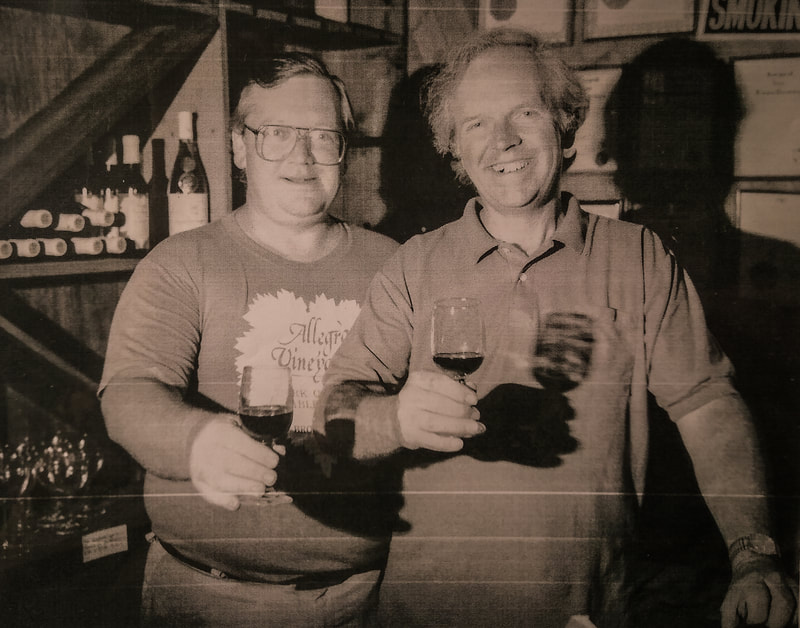
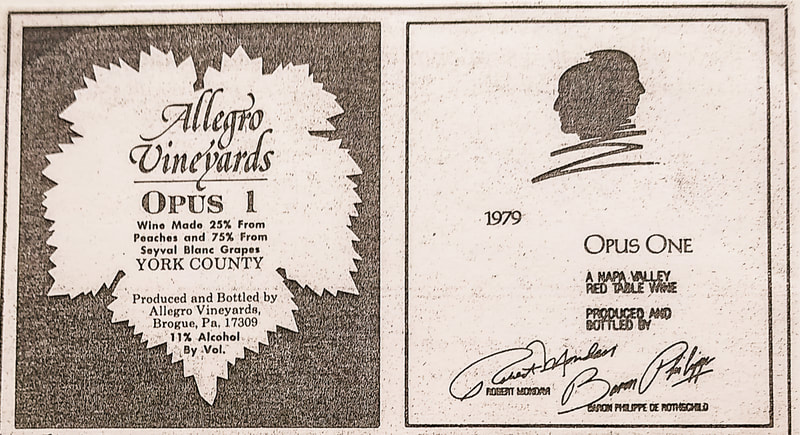
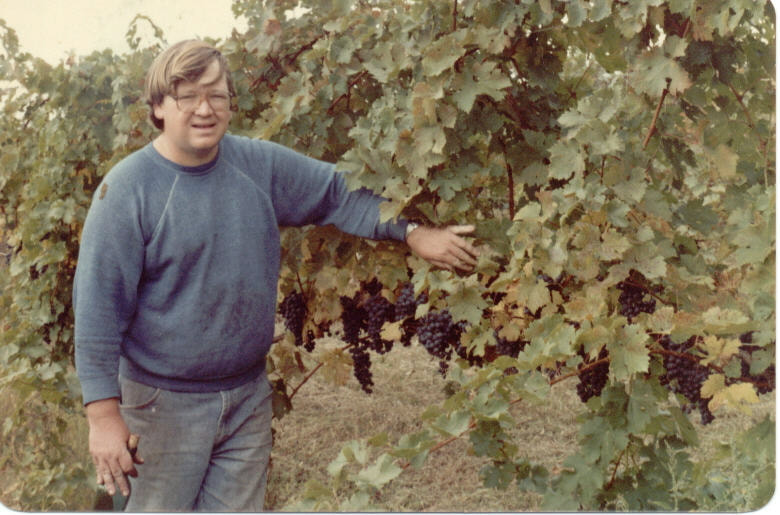
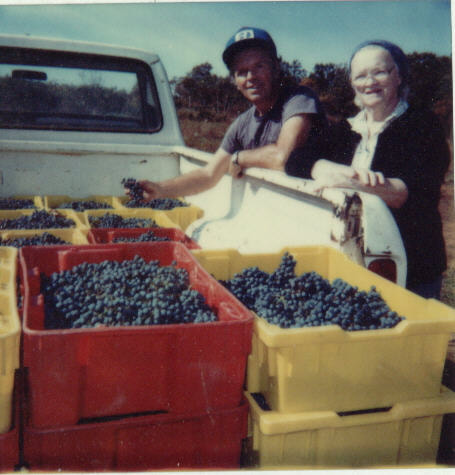


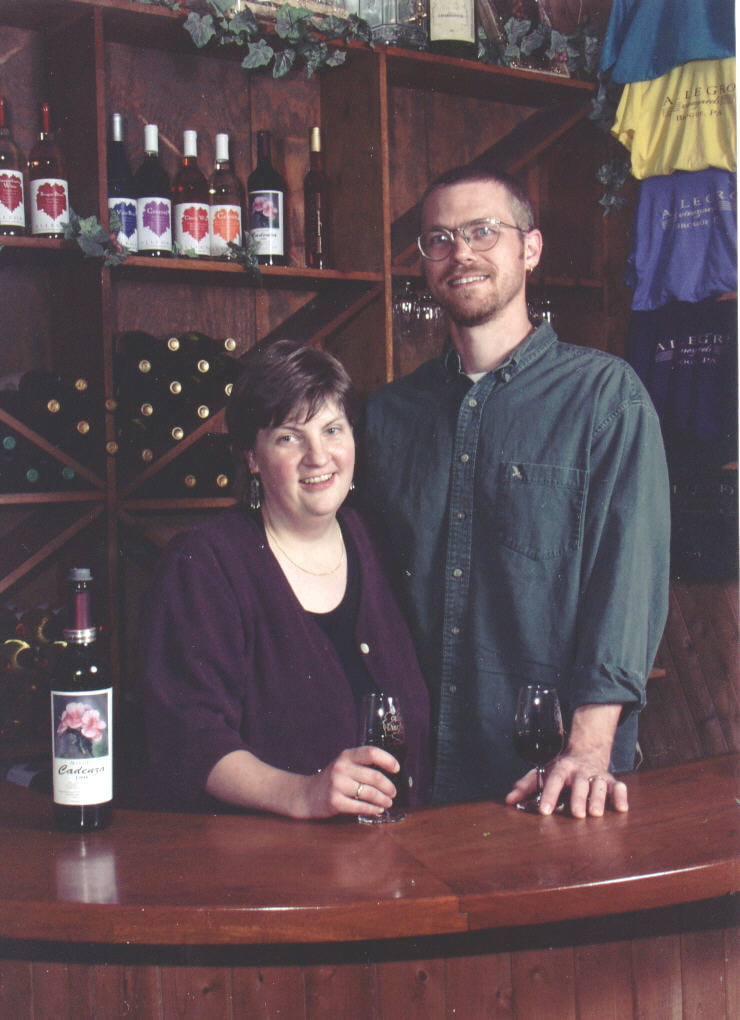
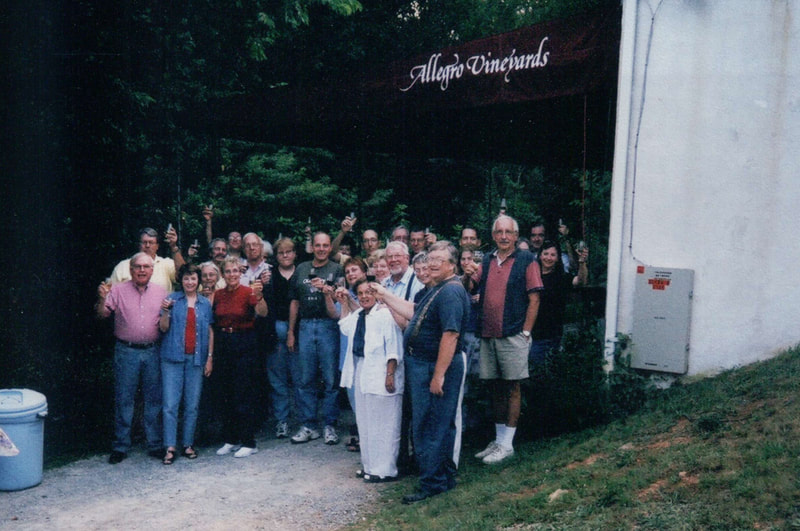

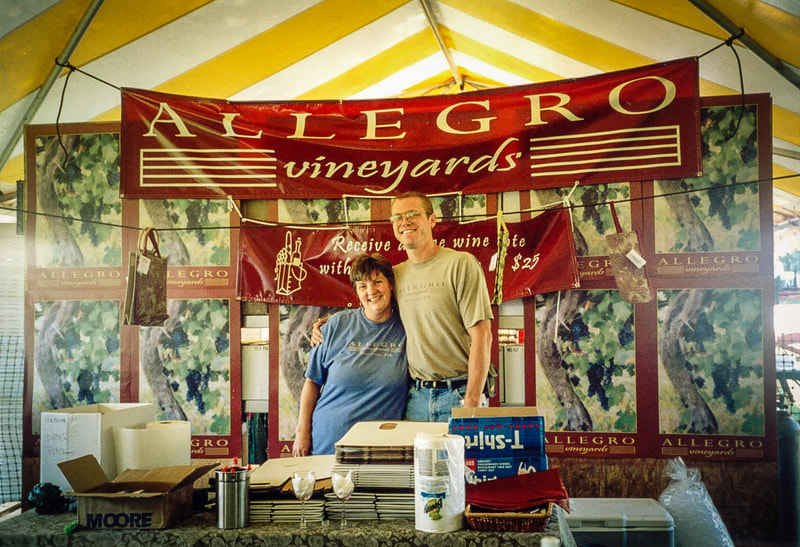
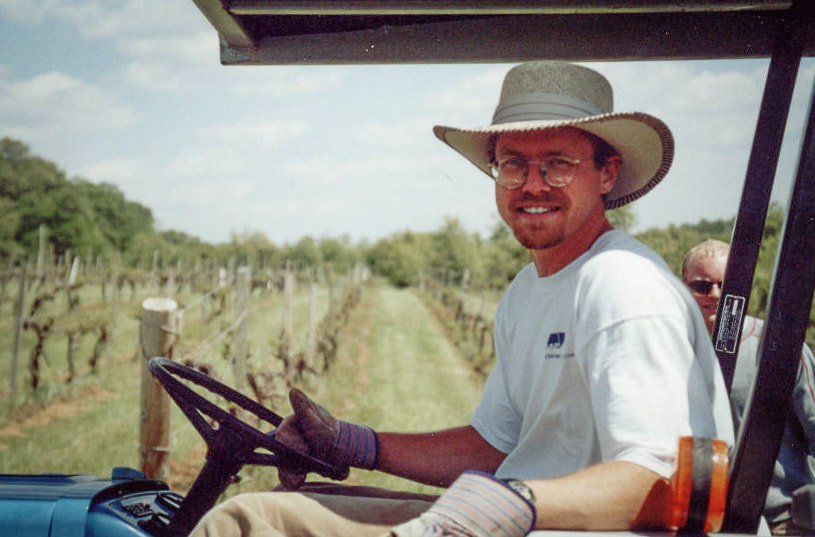
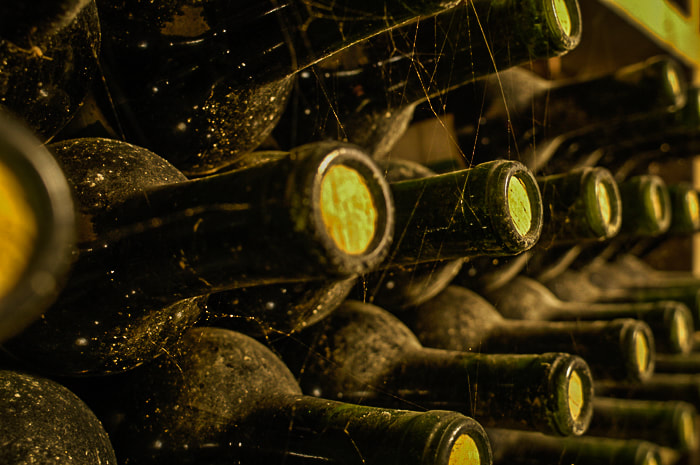

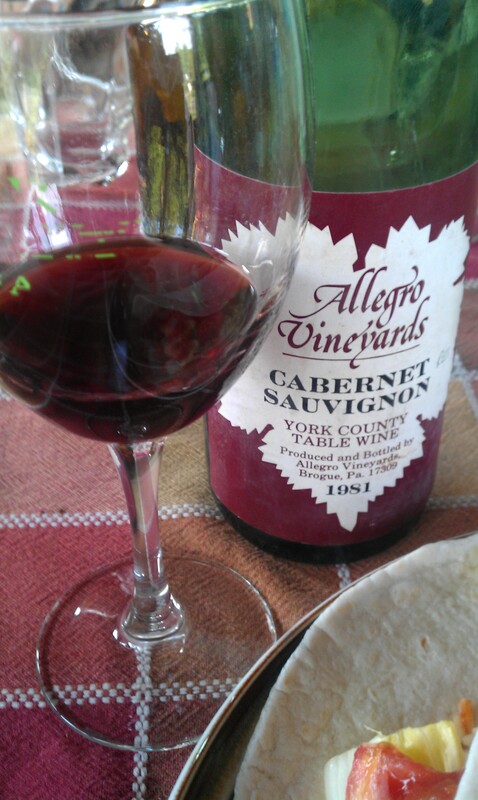
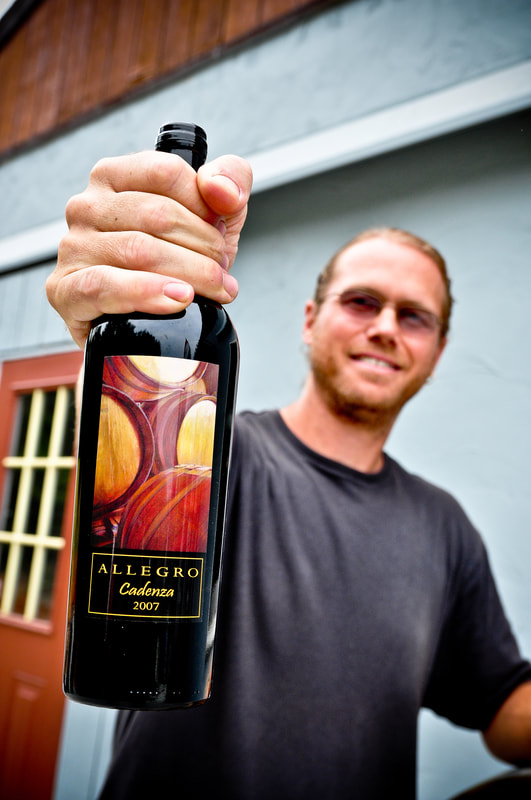
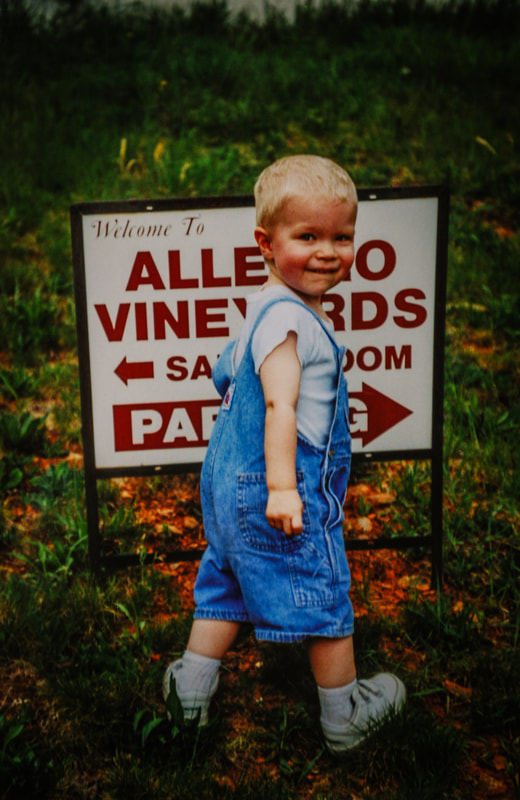
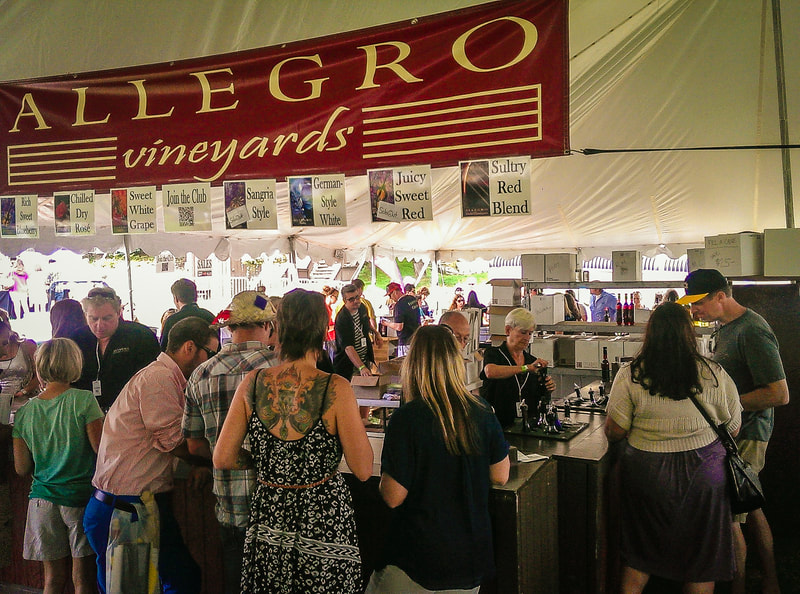


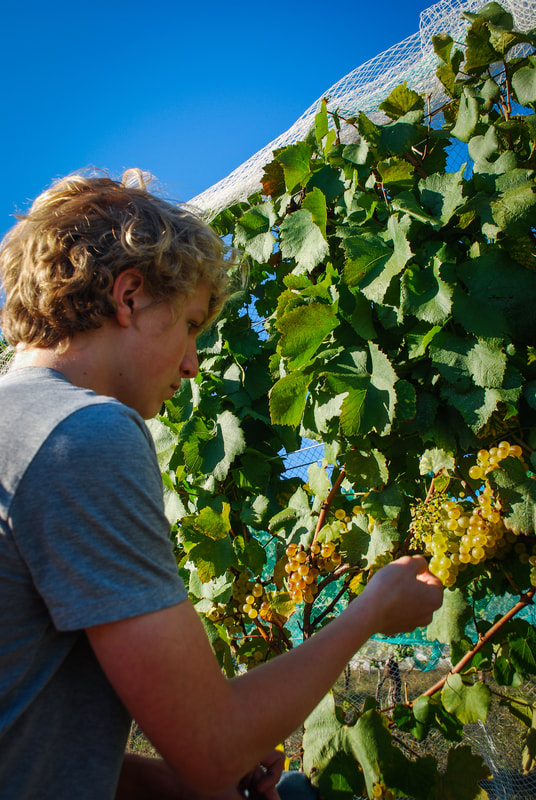



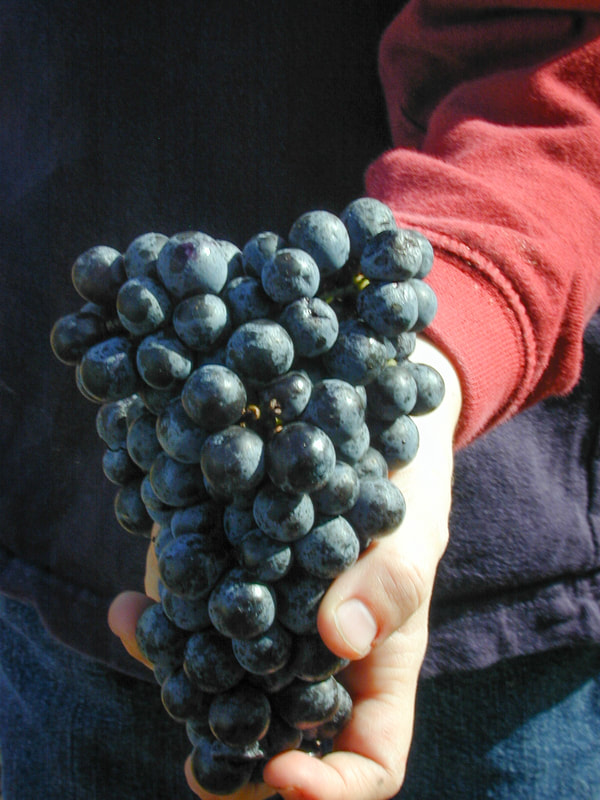
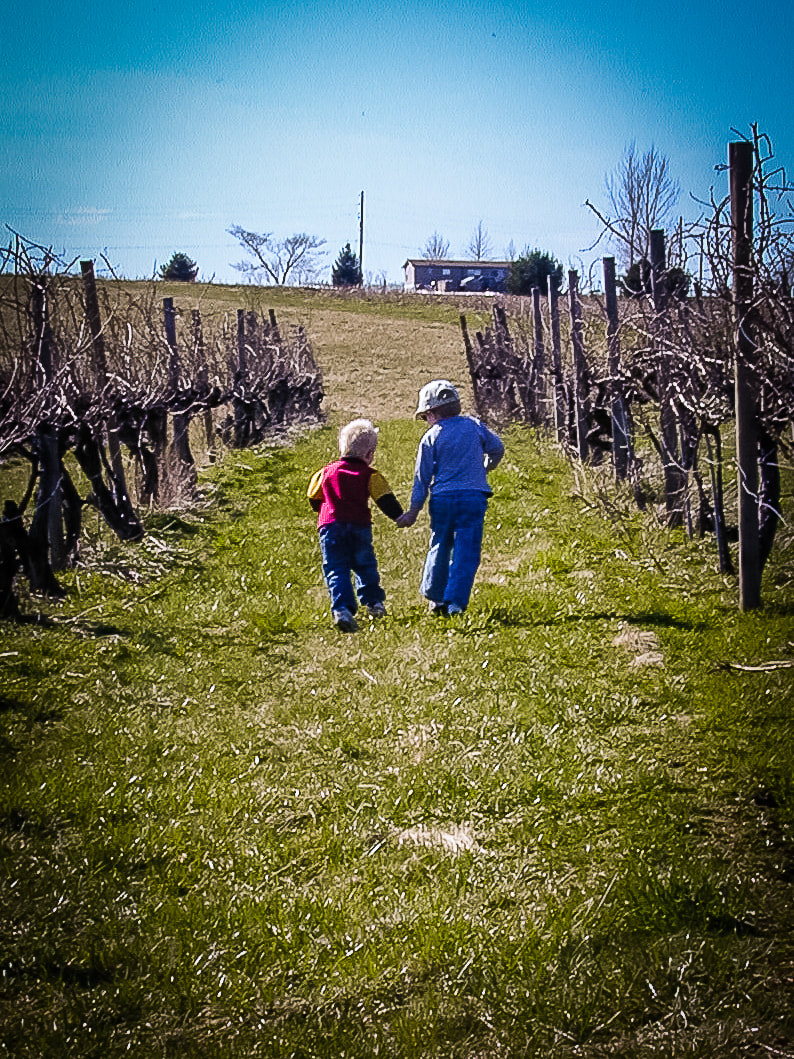
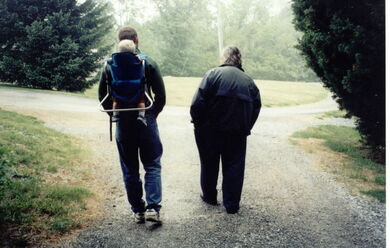
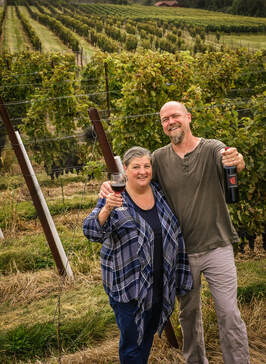
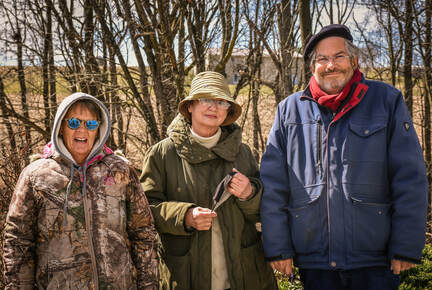
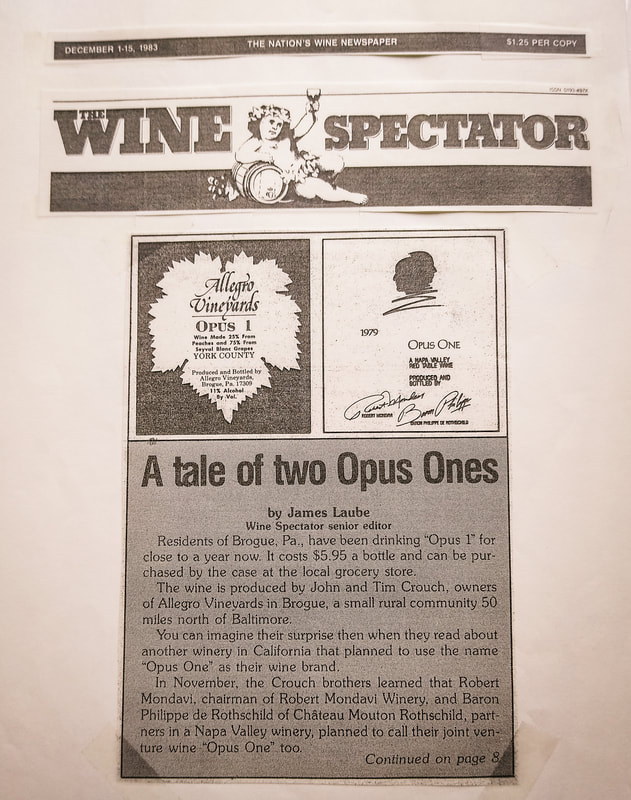
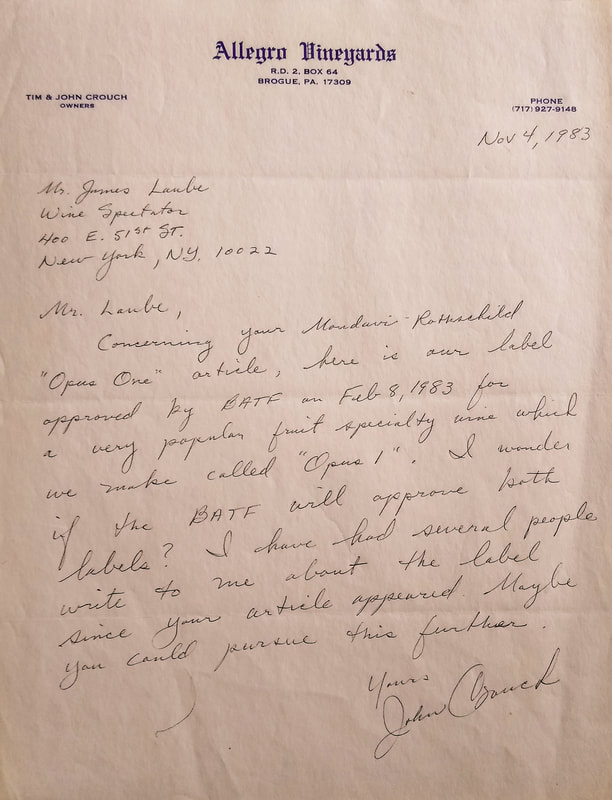
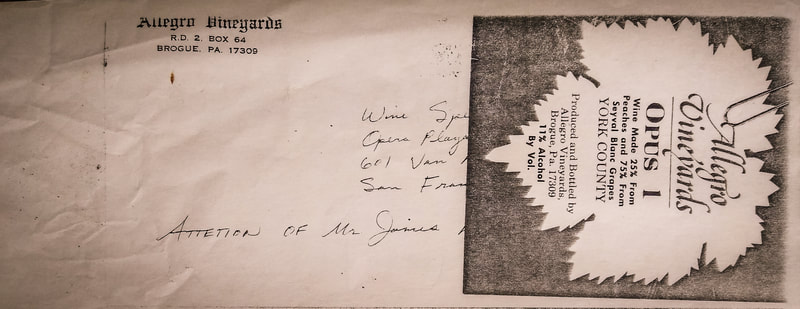
 RSS Feed
RSS Feed